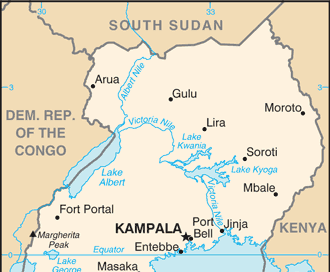In a follow-up on the anthrax outbreak in Uganda in 2024, the number of suspected human cases rose by 66, including two deaths, in Kanungu district in southwestern Uganda, according to the Ministry of Health (MOH).
This brings the total this year to 251 total cases (29 confirmed, 4 probable and 218 suspected) and six deaths among confirmed cases since the beginning of the year.
Anthrax has been reported in 11 of 146 Uganda districts.
The MOH continues to enhance surveillance, risk communication, environmental sanitation, safe burials of dead animals and animal vaccination.
To date, more than 8,000 animals have been vaccinated in Kanungu district.
Anthrax is a serious infectious disease caused by a bacteria called Bacillus anthracis. Many different types of animals, as well as people, can get the disease.
In animals, signs of the illness usually appear 3 to 7 days after the spores are swallowed or inhaled. Once signs begin in animals, they usually die within two days. Infected animals may stagger, have difficulty breathing, tremble, and finally collapse and die within a few hours. Sometimes animals may have a fever and a period of excitement followed by staggering, depression, unconsciousness (lacking awareness), difficulty breathing, seizures, and death. Dark blood may ooze from the mouth, nose, and anus.
Handling or eating a dead or sick animal infected with anthrax can transmit anthrax to humans and other animals. Anthrax is not spread by sneezing or coughing. Person-to-person spread of the disease is unlikely.
Subscribe to Outbreak News TV on YouTube
In humans, symptoms of disease vary depending on how the disease was contracted, but usually occur within 7 days after exposure. The three forms of human anthrax are inhalation anthrax (caused when the spores are inhaled into the lungs), cutaneous anthrax (caused when broken skin comes into contact with infected animals or hides), and intestinal anthrax (caused when undercooked meat from an infected animal is eaten).
Initial symptoms of inhalation anthrax infection may resemble a common cold. After several days, the symptoms may progress to severe breathing problems and shock. Inhalation anthrax is usually fatal, unless the patient is treated before any symptoms occur.
The intestinal disease form of anthrax may follow the consumption of contaminated food and is characterized by an acute inflammation of the intestinal tract. Initial signs of nausea, loss of appetite, vomiting, and fever are followed by abdominal pain, vomiting of blood, and severe diarrhea. Like inhalation anthrax, the intestinal form is usually fatal.
The cutaneous form of the disease begins with itching at the site of the exposure, followed by the formation of a round, pimple-like sore. This sore will then form a blister which, after 2-6 days will become a hard, black scab (similar to the scab left after a deep burn). Untreated, between 5 and 20% of patients will die. However, with adequate antibiotic treatment very few deaths occur.





